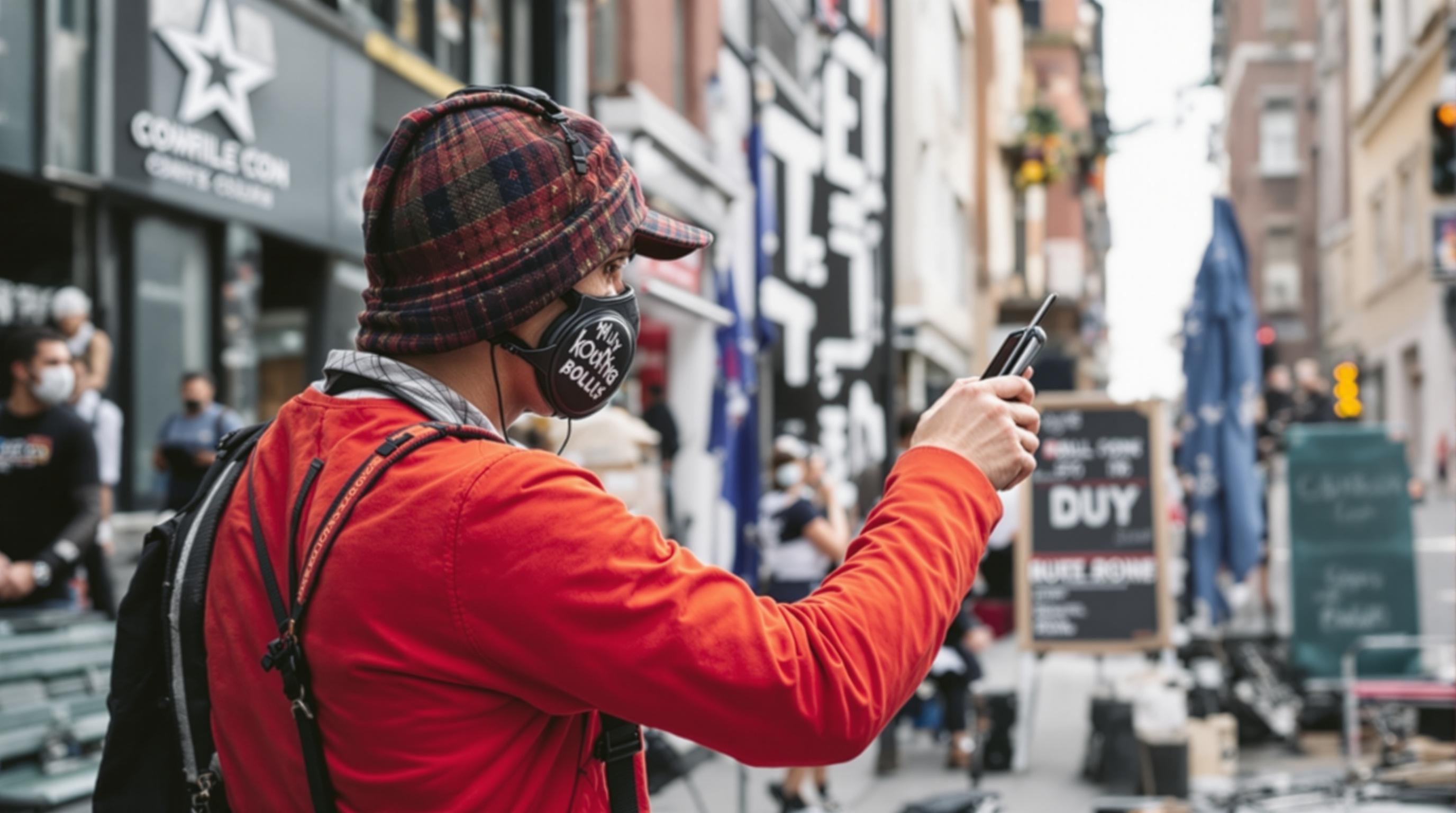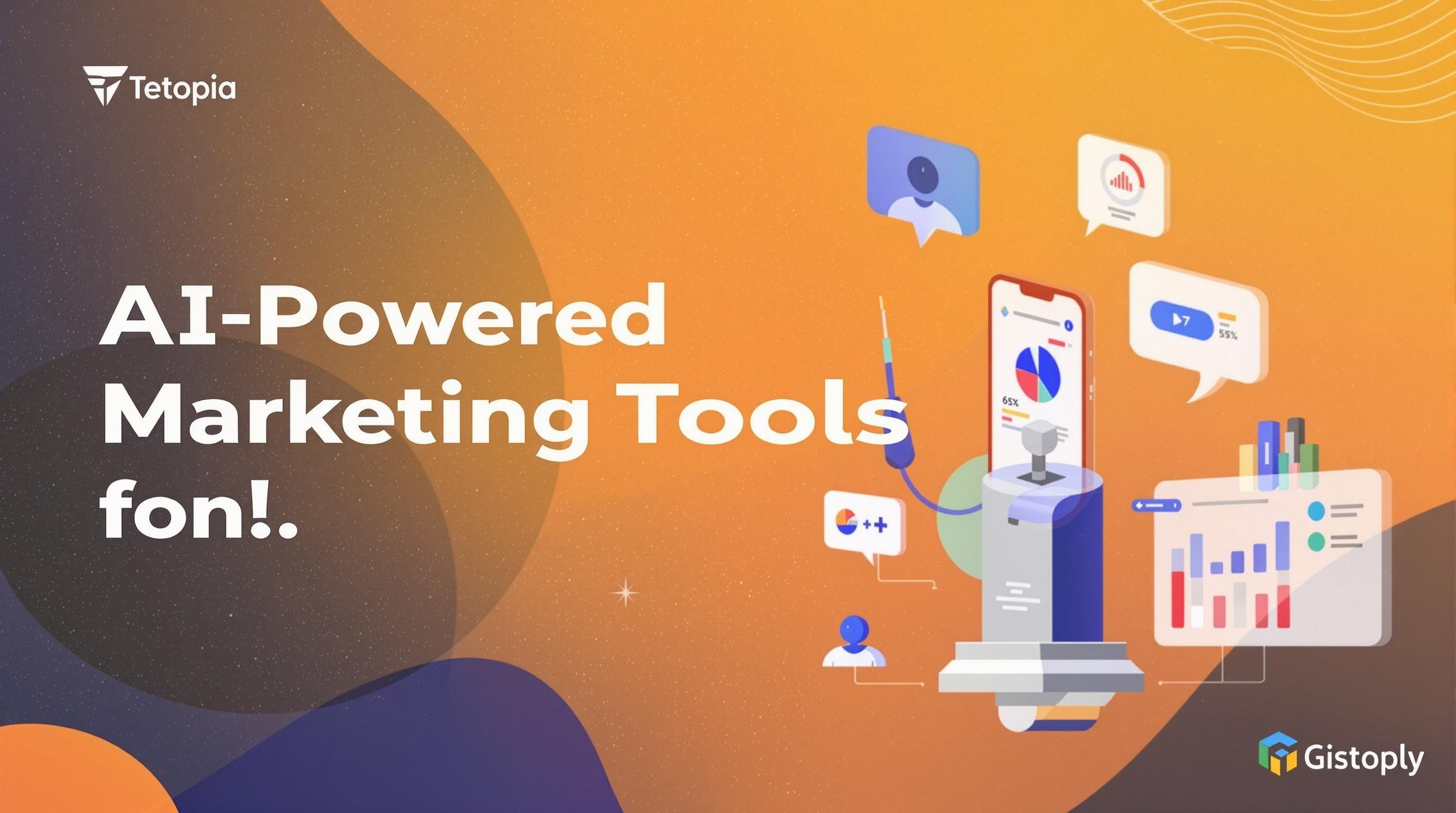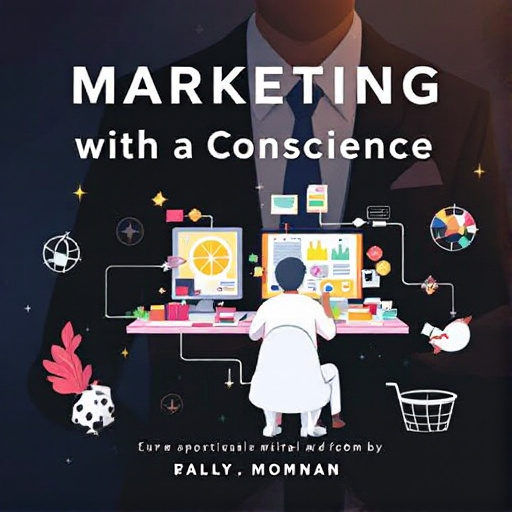Featured Articles
- 12 Innovative Guerrilla Marketing Tactics to Explode Your Brand Visibility Without Breaking the Bank
- How Sensory Branding Taps Smells and Sounds to Forge Deeper Emotional Bonds with Customers
- Marketing with a Conscience: How Brands are Embracing Ethical Dilemmas to Drive Consumer Loyalty
- The Rise of Eco-Conscious Branding: Turning Green Ethics into Marketing Gold
- The Surprising Role of Memes in Shaping Modern Brand Strategies: A New Frontier in Business Marketing
12 Innovative Guerrilla Marketing Tactics to Explode Your Brand Visibility Without Breaking the Bank
12 Innovative Guerrilla Marketing Tactics to Explode Your Brand Visibility Without Breaking the Bank
12 Innovative Guerrilla Marketing Tactics to Explode Your Brand Visibility Without Breaking the Bank
1. Sticker Bombing for Urban Appeal
Sticker bombing involves placing branded stickers in strategic, high-traffic urban locations to catch the eye of potential customers. Unlike typical advertisements, stickers can be quirky, artistic, or humorous, making them memorable. This tactic works especially well in cities where foot traffic is dense and youthful audiences gather.
The creativity in sticker design often sparks curiosity and encourages social sharing, which can magnify brand awareness organically. Since stickers are inexpensive to produce and easy to distribute, businesses can achieve wide visibility on a limited budget. It’s crucial, however, to respect local regulations to avoid legal issues related to unauthorized posting.
For inspiration, brands like Obey Giant and Mystery Brand have used sticker campaigns to create cult followings. Remember, the goal is to engage passersby, making them smile or think, thereby associating those positive feelings with your brand.
2. Flash Mobs to Create Buzz and Energy
Flash mobs are spontaneous, choreographed group activities performed in public spaces to captivate audiences and generate buzz. By incorporating your brand’s message or product into the performance, you create an unforgettable spectacle that attracts attention both on-site and through viral online sharing.
The key advantage of flash mobs is their ability to energize and engage communities without the need for expensive media buys. With proper planning, flash mobs can be recorded and leveraged across multiple digital channels to extend their reach exponentially.
A notable example was T-Mobile’s 2009 London flash mob, which attracted millions of YouTube views and significantly boosted brand visibility. To maximize impact, consider themes relevant to your target audience and ensure flawless execution to retain enthusiasm and credibility.
3. Creative Use of QR Codes
QR codes have evolved beyond simple website links and can be creatively integrated into guerrilla marketing to encourage interaction. By embedding exclusive content, discounts, or augmented reality experiences, a QR code on posters, packaging, or public spaces invites users to engage directly with your brand.
When placed cleverly, QR codes act as a bridge between offline and online marketing, allowing you to track engagement and tailor future campaigns. It’s essential to clearly communicate the value of scanning the code to entice potential customers.
Brands like Coca-Cola have effectively used QR codes to unlock games or prizes, driving customer involvement and repeat interactions. With mobile device penetration so high, the power of QR codes in guerrilla marketing cannot be underestimated.
4. Ambient Advertising for Subtle Impact
Ambient advertising involves placing ads on unusual objects or in unexpected locations to surprise and intrigue an audience. This approach leverages the environment, transforming everyday spaces into immersive brand experiences. The subtlety often leads to greater memorability than conventional billboards.
An ambient ad might involve turning park benches into branded lounge seats or creating pavement art that interacts with passersby. By blending into a community’s lifestyle, these ads foster positive associations without the intrusion common to traditional advertisements.
One iconic example is the WWF's “panda eyes” on drinking fountains, cleverly linking water conservation with their brand mission. Such creative placements invite conversation and social sharing, critical factors for low-cost viral growth.
5. Pop-Up Events to Build Excitement
Pop-up events are temporary installations or shops that create hype and exclusivity around a brand. These short-term engagements allow businesses to interact face-to-face with customers while showcasing products or services in a dynamic, experiential manner.
Because they are temporary, pop-up events can be executed without long-term rental commitments or high overhead costs. They also create a sense of urgency, motivating attendance and purchases. Social media often amplifies these events as attendees share their experiences real-time.
Successful pop-ups often include interactive elements, giveaways, or collaborations with local artists or influencers to enrich the experience. Brands like Glossier and Adidas have effectively harnessed this tactic to create localized buzz and engage new audiences.
6. Viral Challenges to Encourage Participation
Viral challenges invite users to participate in a branded activity or contest, which they can share online, exponentially increasing reach. Encouraging user-generated content aligns consumer engagement directly with your marketing goals and fosters authentic brand advocacy.
To succeed, a viral challenge should be fun, easy to participate in, and closely tied to your brand identity. Providing clear instructions and compelling incentives, such as prizes or recognition, can spark wide participation.
Examples include the ALS Ice Bucket Challenge, which raised awareness and much-needed funds while creating a social media frenzy. By encouraging your audience to become co-creators, you harness the power of peer influence for expansive brand visibility.
7. Creative Street Art for Urban Engagement
Street art offers brands an opportunity to engage local communities visually with captivating, artistic expressions of their identity. Murals, chalk drawings, or 3D installations can transform dull urban spaces into vibrant brand canvases that invite sharing and admiration.
This approach aligns particularly well with brands that champion creativity, culture, or social causes. Collaborating with local artists not only supports the community but also ensures authenticity, which resonates strongly with audiences.
For example, Nike frequently commissions murals that celebrate athletes and local culture, reinforcing brand values while beautifying neighborhoods. Street art becomes both an advertisement and a public art piece that endures beyond traditional campaigns.
8. Interactive Installations to Engage Senses
Interactive installations invite consumers to physically engage with your brand through tactile, audio, or visual elements. This sensory involvement creates memorable experiences that can foster emotional connections and word-of-mouth promotion.
These installations can range from interactive walls that respond to touch to immersive light shows or public games. By encouraging participation, brands enable customers to become part of the storytelling process, deepening brand recall.
Estée Lauder has used interactive beauty mirrors to great effect, combining technology and physical presence to educate and engage customers. Even small-scale installations can be impactful if designed to delight and surprise.
9. Leveraging Influencer Micro-Ambassadors
Micro-influencers, often with highly engaged niche audiences, can act as guerrilla marketing ambassadors through authentic content and localized campaigns. Their smaller follower counts tend to correspond to higher trust and engagement than mega-celebrities.
Working with multiple micro-ambassadors allows brands to reach diverse segments personally and cost-effectively. These influencers can create organic content that feels genuine and relatable rather than overt advertising.
Research by Nielsen (2020) shows that 92% of consumers trust recommendations from people they know, highlighting why micro-ambassadors are powerful tools for building brand loyalty and visibility. Selection should focus on alignment with brand values and audience overlap.
10. Unexpected Product Placement in Local Spaces
Product placement need not be confined to traditional media; placing products in unexpected, local venues can surprise and delight potential customers. This might include branded coffee sleeves in local cafés, creative displays in libraries, or branded bike-share stations.
The charm of this tactic lies in its subtlety and contextual relevance, which can endear your brand to community members and generate organic conversations. A tailored approach that reflects local culture will enhance resonance and memorability.
For instance, IKEA has placed miniature furniture models in subway stations to spark curiosity and brand recall. Such unexpected but clever placements often attract press coverage, multiplying the impact without heavy media expenditure.



